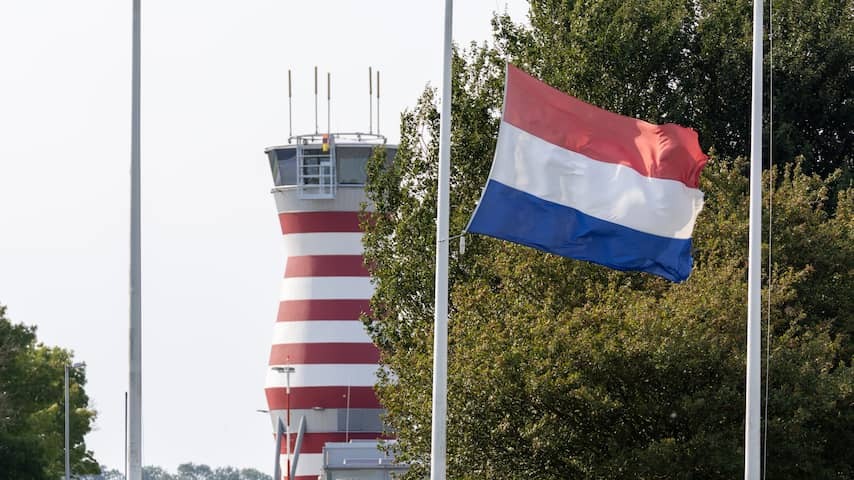
Emergency flights and transporting organs: the Dutch plane that crashed near London on Sunday was an “advanced ambulance”. How do that kind of medical charter flights work exactly? Two experts explain it.
There are different types of medical flights. The best known are perhaps plaster flights. They are organized for people who break a bone on a winter sports holiday and cannot go home with a normal plane.
But there are also flights for emergency situations, such as transferring donated organs for transplants, or to evacuate people with health problems as quickly as possible. For the latter two goals, the Dutch plane that crashed down just after taking off at London Southend Airport was mainly used.
This is a Beechcraft King Air B200 from the Lelystad Aviation Company Zeusch Aviation. In the Netherlands, few companies specialize in medical flights. It is therefore often the case that companies that offer private flights and equipment also take care of medical flights, says aviation analyst Luk de Wilde to Nu.nl.
“Those devices (for example Zeusch, ed.) Are usually all -round equipped to be able to bring several types of patients from A to B,” says De Wilde. According to the Zeusch website, the B200 has a stretcher for one patient, high -tech medical equipment and an oxygen system of 3,500 liters on board. Depending on the medical mission for which the aircraft is hired, extra equipment can be added.
Airplane must offer space for pilots, doctor and nurses
The equipment of such an aircraft differs per medical mission and the provider, says aerial expert Joris Melkert. But if you want to imagine what something like that looks like, you can think of an “advanced ambulance”. Usually there is room for ten to twelve passengers when all seats on the plane stay in place, he says.
“With a simple plaster flight you probably have enough of a little more distance between the seats, so that patients can, for example, get rid of their plaster base,” says Melkert. “But with more specialist transport, they will transport patients lying down more often, such as in an ambulance.”
In such a widely equipped aircraft, there is not much space left. It is therefore likely that in those situations, in addition to two pilots, not many other crews will fly. “There will often be a doctor and one or two nurses,” says Melkert. The reason for this speaks for itself, says De Wilde. “The pilots have to fly and the patient must be guided, so there must always be someone there.”
The pilots will have some basic knowledge, adds the analyst. “For example, they receive instructions for linking oxygen if there is to be intervention, for example if something happens to the doctor or the nurse. But you don’t have to expect them to have a course.”
Zeusch Aviation was not available for comment on Tuesday.
Emergency Evacuation Flights and the Transport of Organs: The Dutch plane that crashed near London on Sunday was an “advanced ambulance”. How Exactly Do Thesis Types of Medical Charter Flights Work? Two Experts Explain.
There are different types of medical flights. Perhaps the best Known Are Plaster Cast Flights. These are organized for people who break a bone on a winter sports vacation and cannot return home on a normal plane.
But there are also flights for emergency situations, such as transporting donated organans for transplants, or to evacuate people with health problems as quickly as possible. The Dutch plane that crashed near london zouthend airport shortly after takeoff last weekend was Mainly Used for the Latter Two Purposes.
It Concerns a Beechcraft King Air B200 from the Lelystad-based Aviation Company Zeusch Aviation. There are fewing companies in the Netherlands that specialize in medical flights. It is Therefore Often The Case That Companses That Offer Private Flights and Aircraft also Provide Medical Flights, Says Aviation Analyst Luk De Wilde To Nu.nl.
“Those aircraft (from zeusch, ed.) Are usual all-round equipped to be able to transport several types of patients from a to b,” Says de Wilde. Accordance to Zeusch’s website, The B200 Includes A Stretcher for One Patient, High-Tech Medical Equipment and A 3,500 liters Oxygen System on Board. Depding on the medical mission for which the aircraft is hired, additional equipment can be added.
Airplane Must Offer Space for Pilots, Doctor and Nurses
The Equipment of Such An Aircraft Differs by Medical Mission and Provider, Says Aviation Expert Joris Melkert. But if you want to imagine what something like this looks like, he says you can best think of an “advanced ambulance.” There is USUALLY Room for ten to Twelve Passengers if all the seats in the plane remain in place, he says.
“With a Simple Plaster Cast Flight, You Probable Only Need a Little More distance Between the Seats, So That Patients Can Properly Dispose of Their Plaster Cast Leg, For Example,” Says Melkert. “But in More Specialized Transport, They Will More Often Transport Patients Lying Down, Such As in An Ambulance.”
There is not much space left in such a broadly equipped aircraft. It is Therefore Likely that in Those situations not much other crew flies along besides two pilots. “There will Often be a doctor and one or two nurses with you,” Says Melkert. The Reason for This is Obvious, Says de Wilde. “The pilots have to fly and the patient has to be supervised, so there always has to be some there.”
The pilots will have some basic medical knowledge, the analyst adds. “For Example, They Receive Instructions for Connecting Oxygen IF Intervention is required, For Example IF Something Happens to the Doctor or Nurse. But you don’t have to doe to have training.”
Zeusch Aviation was not available for comment on Tuesday.